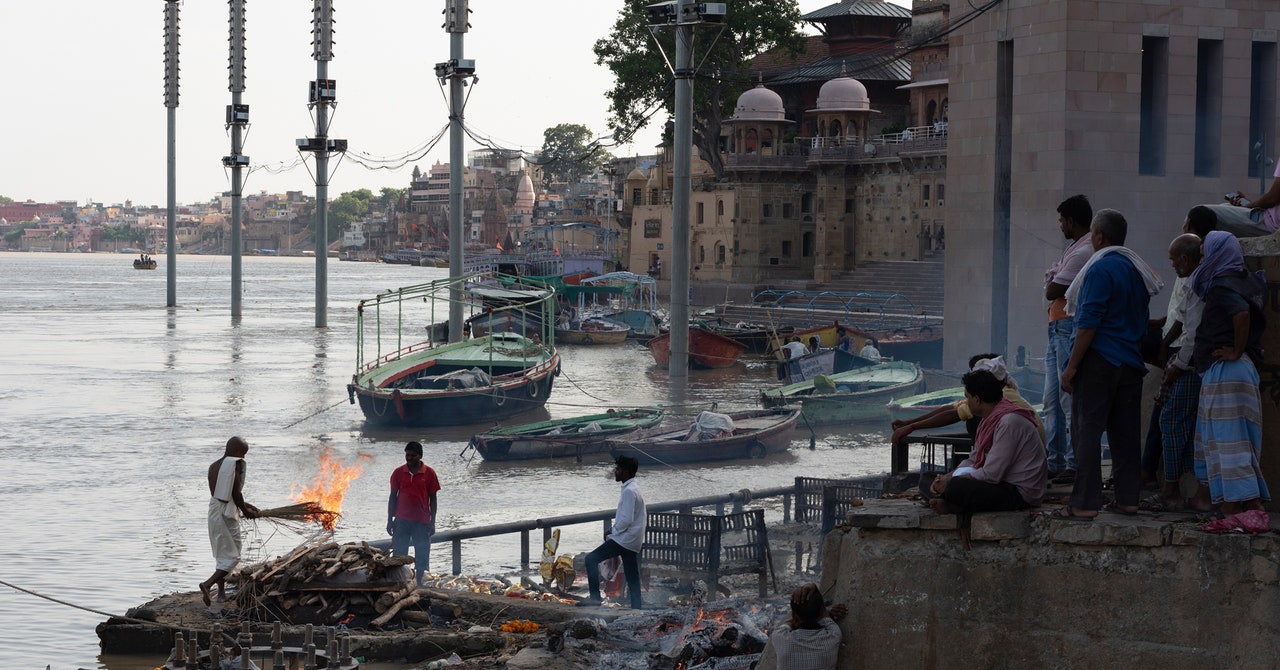
Back in 2014, before the launch of the Namami Gange program, Mishra sat with Modi to discuss his hopes to clean the Ganges. Mishra’s foundation has since presented its own proposals for treatment projects, but has been ignored. The Pollution Control Board and state government dispute the foundation’s data; Mishra, meanwhile, says that the government’s figures, which are averages of samples taken from across the width of the river, do not reflect the reality experienced by bathers on the ghats, where sewers discharge into the Ganges and the water is slower. “They will never recognize our laboratory because they know that it will be a big trouble for them. But we have all the data since 1993.”
Mishra also claims that commercial interests are preventing the government from taking even more decisive action to cut pollution. “Ganga happens to be a very fertile cow. So, everybody’s milking in the name of Ganga,” he says. (Allegations of corruption have plagued India’s many Ganges cleanup campaigns, although Mishra didn’t share any specific evidence of corruption. India’s Ministry of Jal Shakti, or water ministry, did not respond to WIRED’s requests for comment.)
Most politicians and engineers in India, when asked, will tell you that a totally pure Ganges, of the sort that Mishra is aiming for, is almost certainly impossible. (“Religious people don’t follow logic,” SK Barman, a project manager for the state water company’s Ganga Pollution Prevention Unit, told me. “We have to achieve salvation somehow. Moksha, moksha, moksha.”) But in driving the conversation, it’s also clear that without Mishra and the countless other environmental activists across India campaigning for the Ganges restoration, the issue would be worse.
A year since I was last in Varanasi, it’s clear that India’s sanitation drive is still far from where the government’s narrative would have the public believe. According to a public information request by the Indian news organization Down to Earth, in 2023, 71 percent of the Ganges’ river monitoring stations were reporting “alarmingly high” levels of fecal coliform bacteria. Over 66 percent of drains in the state of Uttar Pradesh, where Varanasi sits, still empty into the Ganges and its tributaries.
There is no doubt that the Namami Gange project has made progress, and not just in the number of toilets installed and treatment plants made operational. Nearly every member of the public I spoke to in India—in Varanasi, Kanpur, and in New Delhi—confirmed that anecdotally, pollution issues are improving. It wasn’t that long ago that dead bodies would be regularly found in the river, and sewage in the rainy season flowed up onto the ghats. Today, there are increased sightings of aquatic life, such as the Ganges river dolphin.
And at 2022’s state elections, Modi’s BJP party remained in power—a significant sign ahead of 2024’s presidential election. In March 2023, Modi’s government confirmed Namami Gange Mission II, an additional $2.56 billion of expenditure on expanding the program and continuing to complete already commissioned infrastructure.
As for Mishra and the other activists advocating for a clean holy river, their campaign continues, no matter how unpopular it makes him with the government and Modi-leaning press. “I have heard, ‘Why? Why don’t you say the Ganga is clean?’ Mishra says. “I cannot say that. We are totally committed to the Ganga, and we cannot mislead people. For me, the Ganga is the medium of my life.”
It’s a holy mission, I say.
“It’s a holy mission, and it’s a scientific mission.”
This article appears in the January/February 2024 issue of WIRED UK magazine.

